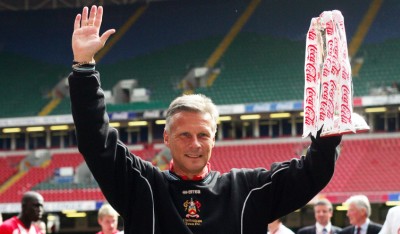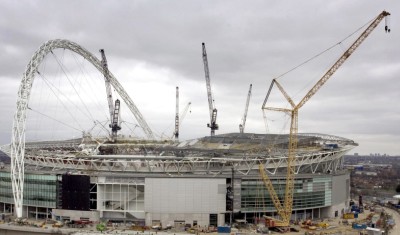|
Football's Forgotten Fields
Last Updated : 03-Jun-2006 byThe dissatisfaction, of course, comes from the fact that this - like the previous two play-off finals - was played on a quagmire quite unfit for the purpose of playing football. Thus the result of a game which decided the fate of an entire season's worth of effort - and game upon which huge levels of emotion, not to say financial reward, were staked – came to be reduced to a lottery.
The fault is not with the Millenium Stadium, which had these games foisted upon it at short notice when the great white elephant known as Wembley was inevitably delayed. No, it lies largely with the Football League, who opted to place their trust in the FA's determined pronouncements that Wembley would be ready in time, rather than in common sense.
Indeed, the spectre of the waste that is Wembley loomed large over the Football League's trio of finales. Not because it wasn't ready, for it did not take the vision of Nostradamus to see that one coming. Rather, because it serves as a reminder that Wembley remains one of the most wasteful projects of the cash-rich football age.
Standing high over North London looms the admittedly impressive arch over the partially built stadium. It acts as a monument to the backslapping and the self-satisfaction of those who built it. The men of the FA board, and those of the biggest clubs.
It was, of course, to be built as the centrepiece of the world cup that never was: England 2006. When that dream fell by the way side, the powers that be decided to build it any way, in a place few would choose if logic drove the selection process. They did not just want a stadium, mind: they wanted it to be bigger, grander, more opulent and consequently more expensive, than any other.
|
There is something to admire in this. If grounds are to be all-seated, then they might as well be comfortable, and give everyone a decent view. But the trouble is that the entire Wembley concept is heavily predicated on the belief that the showpiece events which Wembley will host – the cup finals, England games and so on – will be so attractive that top-dollar prices can be demanded, and that corporate partners will flock to host their guests at these occasions.
Quite aside from the fact that there is something uneasy about this – a sense that this isn't the way a football stadium should be run – Wembley is based on a rather debateable business plan, without much margin for error. It is over budget, way over budget, and is mortgaged to the hilt. It will not take much to send the project spiralling towards disaster.
A new national stadium, if really necessary, could have been built elsewhere – say, the midlands, accessible to all – and it could have been built at a fraction of the cost. For reasons best known to the FA, it was not.
It would not be so bad if the situation facing the football industry was as rosy as the superficial impression would suggest. Whilst attendances across the professional leagues continue to hold steady, and whilst TV money at the highest level continues to increase, the cracks will be covered over. But it is impossible to ignore the fact that, in the Football League, season ticket sales are dropping for the forthcoming season.
|
Then you really do plumb the depths. If this game of ours really does have cash to burn these breeding grounds ought to be at least respectable. Not open to all and sundry, covered in broken bottles and liberally sprinkled with craters which fill with water in winter, or used as an easy dog walking route by owners who then leave the mess behind as an additional hazard.
You would expect these pitches to be proudly tended by a groundsman, preserved for use by Sunday league teams, youth teams and other recreational teams. You would expect them to have changing rooms with hot showers and a kitchen to provide lads with a bacon sandwich and a hot drink after the game.
You would expect the professional game, with its vast reserves, to ensure that playing the game remains an attractive proposition to the next Michael Owen. Yet one of the strangest ironies of the football boom is that, as the game has been swept up in its success, it has increasingly become a spectator activity rather than a participatory sport.
As the England team jet off to Germany, they carry with them the hopes and fears of a nation. Amongst those fans will be the kids who will dream of emulating their heroes. Yet they will do so on a computer rather than with a ball at their feet. Why? At least in part because there is simply not the investment to provide the facilities.
In the mean time, another brick will be put into the wall in North London. Rather late, rather unnecessarily, and to the detriment of the game it is supposed to symbolise.



